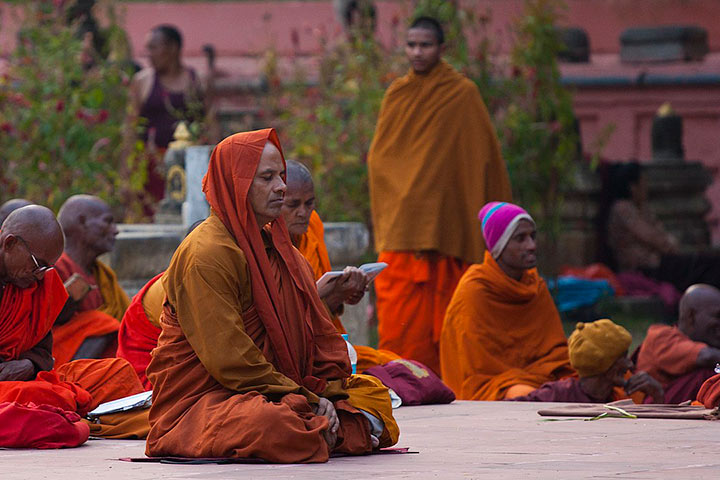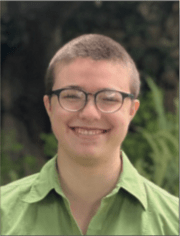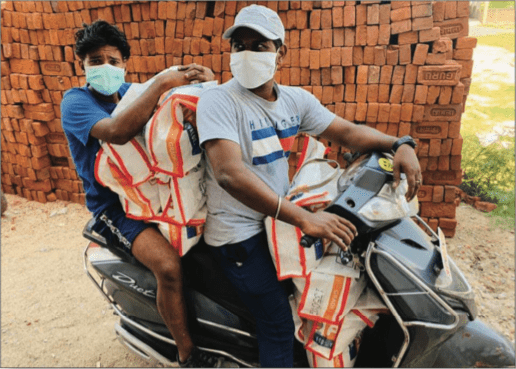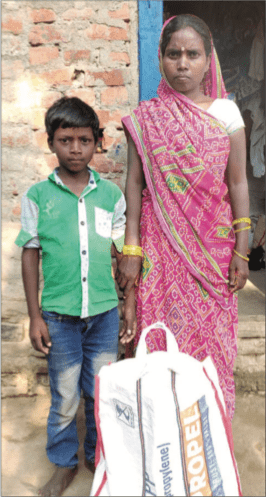
We Are the Fabric of Bodhgaya
July 1, 2020
 by Sacha Greenfield
by Sacha Greenfield
Bodhgaya is the town built around the site of Shakyamuni Buddha’s great awakening under the bodhi tree, and it draws Buddhists of all sorts from all over the world. Three years ago, I studied there for three months through a college program, practicing meditation and studying Buddhist philosophy and culture. This past December, I had the great opportunity to visit Bodhgaya during the season of Tibetan prayer festivals and teachings, when thousands of Tibetan refugees and monks gather. Returning to Bodhgaya, I reconnected with the town in new ways, both deepening old connections and forming new ones.
One of these old connections was Anish Kumar, a local thangka (Tibetan painting) artist born in Bodhgaya. Many mornings and afternoons, I would walk from the Burmese vihara to sit in the Japanese temple, and on the way back I would drop into his shop. We would have chai, and he would explain the process by which he paints thangkas (which are unbelievably intricate) and talk about life in Bodhgaya. He told me about his life as a child, when Bodhgaya was a small, quiet town, and he would bike for hours to take art classes in Patna, 80 miles to the north.

Anish’s family takes donation bags to neighboring communities during the pandemic.
For the nearly four weeks I was there, the energy of the town shifted dramatically. More and more Tibetan refugees were arriving in preparation for the Dalai Lama’s teachings. The town became cold, and dusty from increased traffic and beggars from out of town joined others on the streets. More than ever, it became a place of extremes— great wealth is present in the forty-something temples, yet the town is in the poorest state in India. Rickshaw drivers and laborers live day-to-day. In the midst of days of chanting of the Tibetan canon in the presence of rows of Tibetan rinpoches, beggars are turned away for blessed food. To practice in the Dalai Lama’s presence amidst these extremes, sitting in the pain of unrelenting and overt poverty, was a powerful experience that is impossible to articulate.
Now, in this pandemic, Anish reached out to me describing his efforts to provide food aid for those without work in the pandemic. Together with friends and family, he made contact with families in surrounding villages, gathering funds and providing food packages that last about a week. Based on his outreach, I reached out to our sangha for donations. India’s restrictions are harsh, with armed police enforcing quarantine except for a few hours in the morning and evening. Conditions in Bodhgaya will likely be bad for a long time, given India’s severe travel restrictions and Bodhgaya’s completely tourism-based economy.

A family in Bodhgaya receives a food package outside their home.
This gap between the aspirations associated with Bodhgaya and its harsh reality have become a deep question for me. These people, the pilgrims and the locals, are Bodhgaya—we are the fabric of this sacred site. The bodhi tree itself is sick, its leaves being eaten alive and its bark graying from the smog. What is the site of Buddha’s awakening calling us to awaken to?
Sacha is a resident member at ZCLA.
